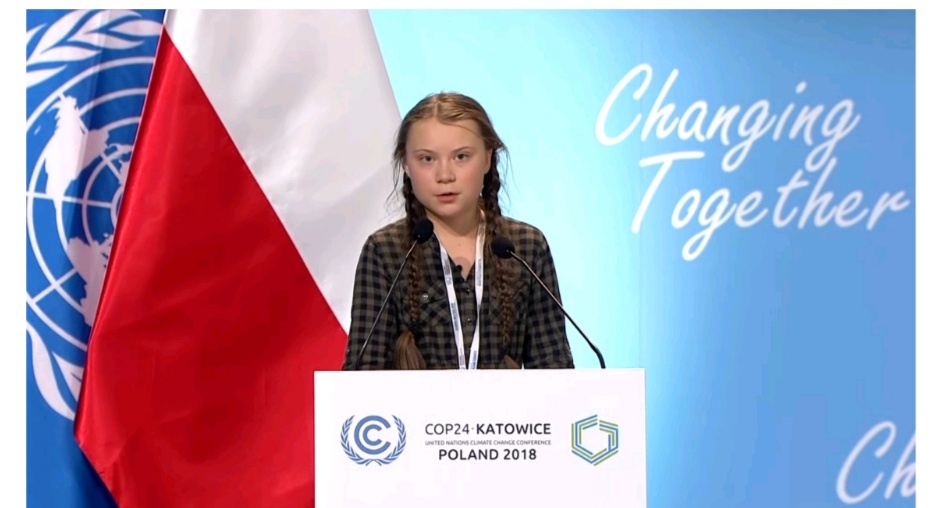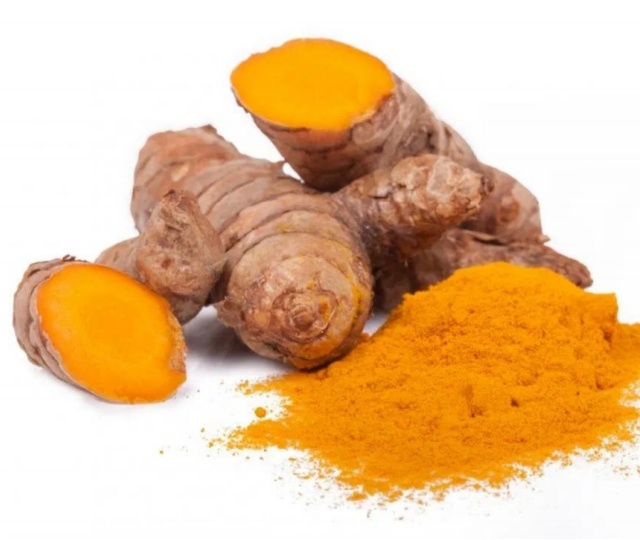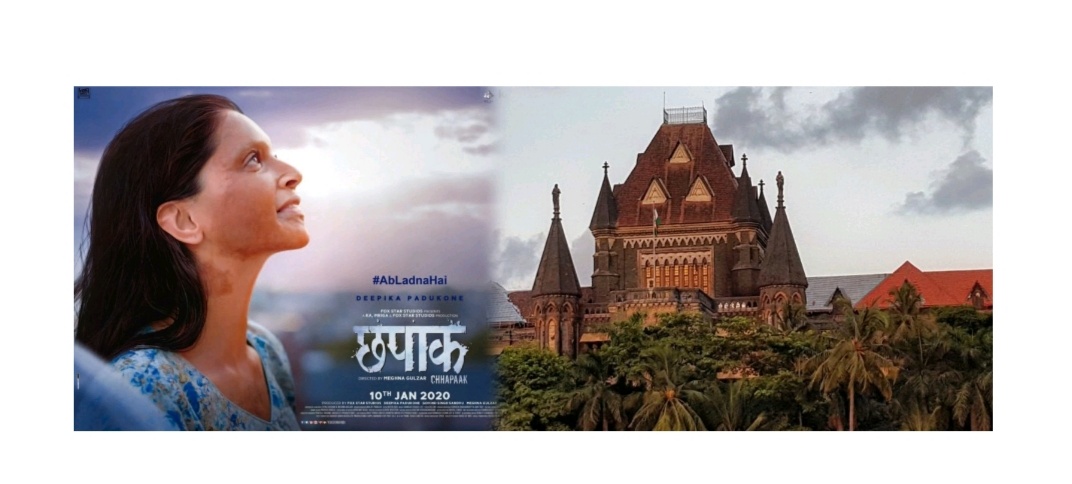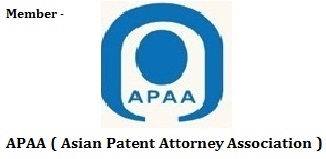Teen eco warrior Greta Thunberg said Wednesday she has registered both her own name and her Fridays For Future global protest movement as trademarks in order to prevent them from being hijacked for fraudulent purposes.
My name and the #FridaysForFuture movement are constantly being used for commercial purposes without any consent whatsoever, the 17-year-old Swede wrote on her Instagram account.
I assure you, I and the other school strikers have absolutely no interests in trademarks. But unfortunately it needs to be done.

She complained that there are still people who are trying to impersonate me or falsely claim that they represent me in order to communicate with high profile people, politicians, media, artists etc.
There had also been instances of marketing, product selling and people collecting money in my and the movements name, she wrote.
That is why Ive applied to register my name, Fridays For Future,… as trademarks. This action is to protect the movement and its activities.
Thunberg, whose protests have attracted millions of young people across the globe, also said she was setting up a non-profit making foundation to handle the financial side of Fridays for Future, such as book royalties, donations and prize money.
She insisted that the foundation would be completely transparent, for example, with regard to the taxes it has to pay.
The foundations aim will be to promote ecological, climatic and social sustainability, as well as mental health, the campaigner wrote.
Thunbergs climate struggle began quietly in August 2018 when she skipped school for the first three weeks, and then on Fridays to spend the day outside Swedens parliament with a sign labelled School strike for climate.
Since then, she has become the face behind the global protest movement, particularly for young people.
Thunberg has also come under ferocious attack from climate changes deniers, who accuse her of being manipulated by a green lobby. (courtesy-Forbes )
A big breakthrough in the field of cancer treatment! Kerala’s iconic Sree Chitra
Tirunal Institute of Medical Sciences and Technology (SCTIMST) in
Thiruvananthapuram has won a US patent for developing turmeric-based
curcumin fibrin wafer for cancer treatment! Experts are of the view that this

turmeric-based fibrin wafer is bound to be a game-changer in the field of cancer
treatment.
According to a TOI report, the treatment involves extracting a
molecule from turmeric and directly delivering it to the affected cells. Notably,
the research by Sree Chitra Tirunal Institute was funded by the Indian Council
for Medical Research.
Turmeric, known for its health benefits, has a chemical compound known as
curcumin.
Curcumin can easily be absorbed in the body and has proven
properties to fight cancer, the Times of India report quoted SCTIMST head and
lead researcher, Dr Lissy Krishnan, as saying. The Week cites that for a long
time, researchers have been trying to develop cancer treatment using these
- properties of turmeric, but it has not been possible to look into chemotherapy
using curcumin as the molecule is water-insoluble.In a significant development, SCTIMST research has been focused on
developing a delivery system through which the curcumin could directly be
planted in the affected cells instead of using oral or intravenous methods. This
would enable the molecule to target cancer cells while sparing the healthy cells
in the surrounding.
The delivery system devised by SCTIMST includes processing curcumin to
form a wafer configuration. As per The Week, this wafer would consist of
freeze-dried curcumin and human blood proteins fibrinogen and albumin. When
released in the body tissues, the albumin present in fibrin clot would bind the
albumin receptors to the cancer cells, allowing the entry of curcumin into the
tissue. Meanwhile, the fibrin clot would be broken down as a result of the
body’s natural mechanism, without any harmful effects.
The TOI report has also quoted SCTIMST director Asha Kishore as saying that
the aim is to implant the wafer after surgically removing the cancer tissue, so as
to kill any remaining cancer cells that could cause the disease to reoccur or
spread to other parts. The SCTIMST is now ready for transferring the
technology for further development of curcumin as a cancer treatment, Kishore
said, adding that the US patent would help in boosting the industry’s confidence
in their research.
Get live Stock Prices from BSE and NSE and latest NAV, portfolio of Mutual
Funds, calculate your tax by Income Tax Calculator, know market’s Top
Gainers, Top Losers & Best Equity Funds. Like us on Facebook and follow us
on Twitter.( Source Financial Express ) .


Hindustan Unilever (HUL), which owns the brand Pureit, has won a pre-grant opposition against Tata Chemicals, which sells water purifiers under the brand Tata Swach. The patent office rejected Tata Chemicals’ application for an invention related to a water purifier based on the pre-grant opposition filed by HUL.
In 2012, Tata Chemicals was successful at the Intellectual Property Appellate Board (IPAB) in revoking one of HUL’s patents related to water purifier.
In the latest round, Tata Chemicals along with Tata Consultancy Services, had filed a patent application on July 8, 2008, for the invention titled ‘A Water Purifier’. And, HUL filed a pre-grant opposition under the Patents Act 1970 on January 13, 2011.
Based on the argument from both sides and documents submitted by the companies, the assistant controller of patents & designs, Delhi, in an order dated January 2, 2020, held that the claims lack inventive steps under certain sections of the Act.
The controller accepted HUL’s pre-grant representation. The order also observed that the invention is obvious to a person skilled in that particular technology.
Legal sources said that the assistant controller refused Tata Chemicals’ patent application. This was in view of a prior art (information/document already known) which Tata Chemicals depended on to get the HUL’s patent revoked earlier. The patent officer also relied extensively on the observations of the IPAB in the order which rejected the patent of HUL.
IPAB, in its order in 2012, had said that the technology used by Pureit was not new.
“Also, the expert evidence used by Tatas against HUL, in the earlier case, was used to hold the Tata invention as obvious,” said S Majumdar of S Majumdar & Company, who appeared for HUL in the pre-grant opposition. Essenese Obhan, of Obhan & Associates appeared for Tata Chemicals.
Tata Chemicals, in its patent specification filed with the patent office, had said that there is a need for a water purification device that is simple, a gravity-driven one that is inexpensive, easy to use and effective in removing bacterial contamination from drinking water.
The invention claimed by Tata Chemicals include a water purifier which could be connected to a water storage vessel, and having two chambers and purification materials for improved efficacy.
The pre-grant opposition was considered primarily on HUL’s grounds that the invention has prior claiming and lacks inventive step. HUL argued that the features of the alleged invention are present in the documents available.
The patent dispute between the water purifier manufacturers has been going on for several years now. Earlier, another patent of HUL, for ‘a gravity-fed water purification system,’ was revoked by the patent office in 2012. This was done based on a petition filed by Eureka Forbes, part of the Shapoorji Pallonji Group.
According to a report by TechSciResearch, India’s residential water purifier market was valued at $391.4 million in 2019. It is expected to grow at a compound annual growth rate of 13.3 per cent to touch $818 million by 2024. This will be possible owing to the growing concerns on water-borne diseases, increasing water pollution, and rising disposable income. ( source – Business Standards ) .

The Bombay High Court on Wednesday cleared way for January 10 release of Deepika Padukone starrer movie ‘Chhapaak’. The Court, however, kept all contentions of alleged copyright infringement open and to be heard after the release.
A Single Judge Bench of Justice SC Gupte was hearing copyright infringement plea filed by one, Rakesh Bharti seeking interim stay on the release of movie.
The Court said that no can an claim copyright on a story inspired from true events or incidents. Justice Gupte observed,
“Prima facie, it is impossible to grant ad-interim injunction on the facts presented. If your story is equally inspired from theirs which you have derived from common source, in that case you cannot say it is a Copyright infringement.”
Advocate Girish Godbole, on instructions from the plaintiff present in the Court on Wednesday, submitted that he does not wish to press for ad-interim relief to stall the January 10 release.
However, advocate Godbole requested that liberty be granted to press for relief after the movie is released and script is in public domain.
Granting liberty to the plaintiff to raise his contentions later, the Court has asked the parties to file reply if any within four weeks.The plaintiff, Rakesh Bharti had sought perpetual injunction, claiming that he had conceived the idea for a movie, tentatively titled Black Day, which he got registered with the Indian Motion Pictures Producers’ Association in February 2015.
Bharti submitted that the entire story written by the him was based on the life of acid attack survivor, Laxmi Agarwal. Accordingly, he also told the Court that he had taken necessary NOC from Agarwal for the purpose of producing the said film. It was claimed by Bharti that he had an intention to produce Hindi feature film alongwith his son on the basis of same story.
He submitted that he has been working on the script and approaching several artists and producers including Fox Star Studio for narration.
Meghna Gulzar, however opposed the plea, contending that copyright cannot be claimed on true life events. Meghna Gulzar had sought the dismissal of the interim application.
In an affidavit submitted on Tuesday, Gulzar submitted,
“In the present case, the plaintiff (Bharti) has sought the protection of an idea of a film based on the story of an acid attack survivor Laxmi Agarwal…True facts and events are not entitled to copyright protection.”
It was further contended,
“The suit was wholly misconceived, frivolous, legally untenable and unmeritorious…I submit that plaintiff has not conducted himself in a bonafide manner. Moreover, the suit has been filed with ulterior motives to gain undue publicity and to obstruct and delay the release of the film called Chhapaak.”
The affidavit was filed by Meghna Gulzar through advocates Ameet Naik and Madhu Gadodia of Naik Naik and Company.
It was submitted on Tuesday that script of the film Chhapaak is original and is based on the life of an acid attack survivor.
Counsels of the defendant Film Director argued,
Meghna Gulzar the co-writer and director of the film, had obtained the necessary rights and developed a story and screenplay which was unique and original and based on the research and interviews conducted by her and her team.
Meghna Gulzar added that plaintiff’s conduct is demonstrative of gross, inordinate and unexplained delay and laches, on which could alone the plaint ought to be dismissed. Advocate Birendra Saraf appeared for Gulzar.
The Court has posted the matter for further hearing after six weeks. ( source – barandbench)
As per Section 52 of the Copyright Act ,1957 provides for various acts which do not amount to infringement of Copyright like fair comment, use as part of reporting on current news etc.
GOI said in Rajya Sabha on Friday said it is trying to set up a fully computerized intellectual property rights (IPR) office in the country which is similar to the US model where everything is done online.

Responding during Question Hour, Commerce Minister Piyush Goyal said the government has brought a lot of “sanity” to the working of eight areas of IPR, be it patent, copyright or trademark. “All of these are synergised into one office now. We are in the process of computerizing every process so that people don’t have to go to any IPR office whatsoever,” he said.
In the whole of the US, there is one IPR office and everybody works online, he said, and added, “I am trying to develop that module here.” With smartphones proliferating all over India, the government wants to ensure rural artisans and craftsmen engage directly online through video conferencing and get advise on patent related issues free of cost, he said.
The government has already reduced charges significantly for start-ups, artisans and women entrepreneurs, he added. On protection of traditional knowledge under India’s IPR policy, Goyal said it is not only related to traditional medicine but also traditional cultural expression.
An initial study has been conducted to get a feel of what a road map on this issue should be, he said, and added that the government is now in the process of working out a much more detailed analysis and prepare a road map forward.
On government’s efforts to protect traditional knowledge, the minister said 3.6 lakh formulation which were part of traditional knowledge have now been made available to 13 patent offices across the world.
“Due to which, we were able to save about 236 cases which otherwise would have got patented somewhere else. They were able to deny the patent in different geographies because of our effort to make the world aware that India has lot of traditional knowledge,” he added.
The minister also assured the BJD member that the government will consider protecting “traditional culture” in the IPR policy. The government is very committed that rural India is engaged with the world when it comes to the country’s traditional knowledge he added. (Source TOI).
The government on Friday allotted Geographical Indication (GI) tags to four new products from the states of Tamil Nadu, Mizoram and Kerala.

GI is an indication used on products that have a specific geographical origin and possess the qualities or reputation that are due to that origin. The Department of Promotion of Industry and Internal Trade (DPIIT) recently registered GIs for c, Tawlhlohpuan and Mizo Puanchei from Mizoram and and Tirur Betel leaf from Kerala, a government statement said on Friday.
Palani Panchamirtham, a ‘prasadam’ or religious offering in temples has been allotted a GI, in a first. Tawlhlohpuan, is a fine quality fabric woven in Mizoram, while Mizo Puanchei, essentially a shawl, is considered the most colourful textile in the northeastern state. Tirur betel vine, cultivated in Malappuram district of Kerala, is valued for its medicinal and cultural usages.
“GI products can benefit the rural economy in remote areas, by supplementing the incomes of artisans, farmers, weavers and craftsmen. The Department for Promotion of Industry and Internal Trade is actively involved in promotion and marketing of GIs,” the press statement said.
Recently, a long-drawn tussle between West Bengal and Odisha was resolved after latter secured a GI tag for its own variant of rasgulla.
For promotion and encouraging innovation an invention for the MSME and Startup , Govt. of India specially launched the scheme on 16-09-2019 . an reduce the fees for different activities for registration of the Patent , Design & Geographical Induction.
Fees for Patent registration for MSME Govt. Fees reduce by 60 – 80 % , Design Registration fees is reduced up today 50 % .
For Geographical Induction for MSME , Govt. of India reduced fees by the 100% , other side the GI rights are community Right which is not available for individual .
As per Govt. Records the filling of trade mark registration form 2013– 2014 to 2018-2019 increase by the 69 % and the Patent filling increase by 18 % .
There’s more data to relate than there is instrument-panel real estate, so Volvo came up with a solution . . .
olvo is taking head-up displays to a whole new level, according to this application the automaker has filed with the U.S. Patent and Trademark Office. And when we say whole new level, we mean both literally and figuratively, because this patent involves a head-up display that’s not on the windshield, but on the roof of the car.
The patent application, which has a filing date of August 13, 2019, is assigned to Volvo Car Corporation, erasing all doubts as to which branch of Volvo the system could be applied to. Most HUDs use a series of mirrors in conjunction with a projector to display an image in front of the driver on the windshield; Volvo’s patent is no different, except for the location of the system.
The patent illustrations show a projector system right above the driver that displays information about the car on an “optically transmissive roof window.” We believe the reason that Volvo doesn’t just call it “glass” is probably that the company will modify the glass to allow for better projection in all light conditions. If you’ve ever driven a vehicle with the HUD active while wearing sunglasses, you would have noticed that it can be hard to see the image being displayed. Perhaps Volvo is trying to tackle the issue through the use of an auto-dimming glass or variable-opacity electrochromic glass, which we recently experienced on the 2019 McLaren 720S Spider. As far as the projection system goes, Volvo says it will most likely be LED based, with options for brightness and position customization based on driver preference.
We can only guess what would be displayed up there. It would most likely be nonessential info, given that it’s not a great idea to take your eyes off the road while driving. Volvo states that the reason for the invention is to declutter the front display systems and reduce the number of pages that need to be dug through to find certain information. As cars get more complex, there is more and more information available to drivers, but the space in which it can be displayed has stayed the same for the past 60 years.
One cool feature that Volvo mentions in the patent is the ability to check the vehicle’s status without actually having to go back outside and into the vehicle. The company claims that when the system is on, anyone could look down at the roof from a vantage point above the car (like the second floor of a home or buildling) and know if the car is locked or, in the case of an EV, the battery life and charge status.
Another possibility for a roof HUD system might be for autonomous driving. Drivers who decide to sit back and and let the car drive itself could look up for information about their speed, distance, and time of arrival. This patent does precede Volvo’s plan for Level 4 autonomy by 2021, so there is a strong likelihood of this roof HUD system debuting soon on a concept car.
We’re curious to see what the final product looks like, and how it works, and just how much our necks will hurt to look at it.
New Delhi: A patent right will rest with the academic institution if a student, researcher or faculty member has used its resources and funds for developing a product, according to draft guidelines floated by the government on the implementation of IPR policy for academic institutions.
However, if an institution determines that an invention was made by an individual on his or her own time and unrelated to his or her responsibilities towards the institution and was conceived without use .. of its resources, then the invention shall vest with the individual or inventor.
These guidelines are floated with an objective to foster innovation and creativity in the areas of technology, sciences, and humanities by nurturing new ideas and research, in an ethical environment.
It would also help in protecting intellectual property rights (IPRs) generated by faculty or personnel, students, and staff of the academic institution, by translating their creative and innovative work into IP rights.
“The ownership rights on IP may vary according to the context in which the concerned IP was generated. In this regard, a two-tier classification is suggested for adoption,” it said.
In case of copyright, the draft has suggested that the ownership rights in scholarly and academic works generated utilising resources of academic institution, including books, dissertations and lecture notes, shall ordinarily be vested with the author.
On the other hand, the ownership rights in lecture videos or massive open online courses, films, plays, and musical works, shall ordinarily be vested with the academic institution.
Similarly, ownership rights over integrated circuits and plant varieties; and industrial designs will rest with the academic institution if a student, researcher or faculty member have used its resources and funds for developing the product.
The guidelines also said the academic institution is free to enter into revenue sharing agreement with the researcher, in cases of commercialisation of innovation, and creation as per the advice of IP Cell.
It added that the academic institution may appoint a committee of experts to address the concerns of the aggrieved person and all disputes shall be dealt with by this committee.
It has also suggested creation of IP Cells in academic institutions to ensure the effective applicability of these guidelines.
The Cell will be responsible for conducting awareness programmes for students, faculty, researchers, and officials. Besides, it would conduct advanced-level awareness programmes.
“IP Cell shall provide an environment for academic and R&D (research and development) excellence and conduct dedicated programmes on IPR for the undergraduate and postgraduate courses. ..
The other objectives of these guidelines include laying down an efficient, fair, and transparent administrative process for ownership control and assignment of IP rights and sharing of revenues generated by IP, created and owned by the academic institution.
“These guidelines shall apply to all IP created at the academic institution, as well as, all IP rights associated with them, from the date of implementation of these norms,” it added.
The 23-page model guidelines on implementation of IPR policy in Academic Institution have been prepared by the Cell for IPR Promotion & Management (CIPAM), under the commerce and industry ministry.
The IPRs are statutory rights. Owners of these exclusive rights get protection for a specified period of time like 20 years in case of patents. These rights include copyrights, Patents trademarks, geographical indications, and industrial designs.
Singapore is the first country in the world , launch computer application for trademark Registration , by the easy process you can file your trade mark application within 10 minutes .
A new mobile app touted as the worlds first trademark registration mobile app will allow businesses and entrepreneurs to file their trademarks directly with the Intellectual Property Office of Singapore (IPOS) on their mobile devices.
Named IPOS Go, the app has a simplified user interface and features that will allow for a faster and easier application process, IPOS said.
With the app, a trademark can be filed in less than 10 minutes, a small fraction of the current 45 to 60 minutes IPOS said.
Filing costs will also be significantly reduced as applicants may feel more confident in filing their applications directly with IPOS, the authority said.
Available on the Apple App store and Google Play, the app will also allow applicants to track their registration status, be notified of important updates, as well as file for trademark renewals.
IPOS Go also uses artificial intelligence (AI) technology to help prevent applicants from filing for trademarks that are too similar to existing ones. IPOS said that more than 40 per cent of trademarks filed in the world today contain images.
As the world continues to see a surge in trademarks filings, the new AI capability will help business owners better manage their brands, it said.
According to IPOS, trademark applications in Singapore have increased by 30 per cent over the last five years.









